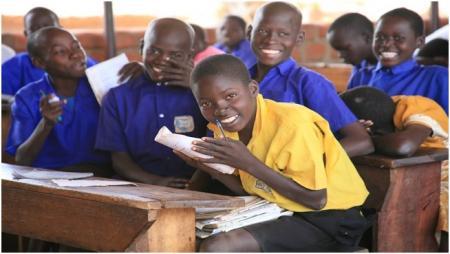
Two years into the adoption of the ambitious Sustainable Development Goals (SDGs), one of which includes a goal to provide inclusive, equitable, and quality education and lifelong learning opportunities for all, the question of ‘how’ still remains, according to IPS.
In an effort to answer this question, the UN convened a high-level meeting to discuss and explore new approaches to achieve the education goal, namely SDG 4.
“Access to quality education is not only a goal in itself, but a fundamental building block of creating a better world of sustainable peace, prosperity, and development,” said current General Assembly President Peter Thomson during the opening segment.
“For in the act of investing in education, we are realizing the potential of our greatest asset: the potential inherent in the people of this world,” he continued.
Deputy Secretary-General Amina Mohammed echoed similar sentiments, stating, “We know that when we deliver education to a young person, we are not only delivering the knowledge and skills they will need to chart their futures, but we are preparing them to lend their hearts, hands, and minds to shaping a much more peaceful, prosperous society indeed for themselves but also for everyone.”
However, much work needs to be done.
More than 260 million children and young people are out of school, and the number of primary-aged children not in school is increasing.
Over 750 million youth and adults also do not have basic literacy and numeracy skills, even if education is accessible.
Access to education often has a trickle-down effect, helping boost food, health, and economic security, all of which are also essential SDGs.
Education is therefore the 'golden thread' that connects all 17 SDGs, Thomson noted.
But providing education is no simple task as there are many challenges to overcome.
Children in fragile or conflict-affected countries are often hard to reach but are three times more likely to miss primary school compared to children in other non-fragile developing countries. Additionally, only 50 percent of refugee children and 22 percent of refugee adolescents have access to primary and secondary schools.
“This is not only a short-term challenge, but a challenge that goes directly to the heart of our long-term efforts to build a more peaceful and equal world,” Mohammed said.
Innovative ways to deliver quality education are therefore essential, from providing temporary learning spaces to displaced children to using technology to reach children in remote and hard-to-reach areas.
Girls also still face a range of barriers from gender-based violence to social and cultural norms that prevent girls from attending to even the lack of appropriate and separate toilet facilities for girls, causing 130 million primary and secondary-aged girls to be out of school today.
Two-thirds of all illiterate adults are also women.
Since increasing women and girls’ access to education is proven to directly contribute to healthier families and economies, Thomson urged to look for ways to end gender discrimination that stops women and girls from accessing education.
Participants also highlighted the importance of providing lifelong learning for life and work.
“Over the next ten years, a billion young people will enter the global workforce. They need the requisite skills and competencies required not only to do the jobs that exist today, but the many jobs that haven’t yet been invented,” Mohammed stated.
Thomson added that adults should also be supported with ongoing training to help them adapt to and participate in rapidly changing workplaces.
